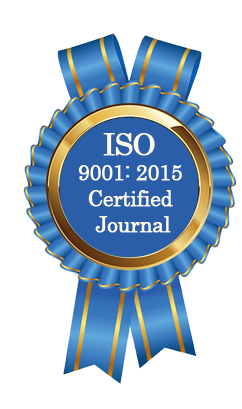| All | Since 2020 | |
| Citation | 105 | 60 |
| h-index | 4 | 4 |
| i10-index | 3 | 2 |
WJAHR Citation 
Login
News & Updation
Best Article Awards
World Journal of Advance Healthcare Research (WJAHR) is giving Best Article Award in every Issue for Best Article and Issue Certificate of Appreciation to the Authors to promote research activity of scholar.
Best Article of current issue
Download Article : Click here
Indexing
Abstract
ENDOSCOPICAL AND HISTOPATHOLOGICAL ASSESSMENT OF ESOPHAGEAL BIOPSIES IN PATIENTS WITH GASTROESOPHAGEAL REFLUX DISEASE
Shahad Rafea Hoobi*, Alaa G. Hussain, Ban J. Qasim
ABSTRACT
Background: Gastroesophageal reflux disease is a chronic digestive condition that affects the lower esophageal sphincter causing the stomach content to back up from the stomach into the esophagus. It is a common disease with a prevalence of 8%-33% involving all age groups and both genders. Aim: To assess clinical, endoscopic, and histopathological features of esophageal biopsies in patients with Gastroesophageal reflux disease. Method: A retrospective study including analysis of 100 randomly selected patients with Gastroesophageal reflux disease collected from Teaching Laboratories of Al-Emamain Al-Kadhmain Medical City (AS), Baghdad Medical City and private labs in Baghdad, Iraq, reported between October 2020 to January 2022. The age, gender, clinical presentation, endoscopic and microscopical findings were studied. Results: The mean age of patients in this study was (47.37 years ± 12.13 SD), 64.0% of cases were males and 36% of cases were females. Regarding chief complaint at presentation, 31.0% of cases presented with heartburn, 20.0% with dysphagia, 16% with dyspepsia, 22% with epigastric pain, 9% with vomiting, 1% with melena, and 1% with regurgitation. Regarding endoscopic findings, 23% had esophageal thickening, 19% had esophageal ulceration, 6% had thick ulcerated esophageal lumen, 9% had esophageal polyp, 10% had esophageal erosion, 7% had erythematous esophageal lesion, 11% had esophageal nodule, 7% had esophageal mass, 5% had normal mucosa, 2% had esophageal stricture, and 1% had circular esophageal folds. Regarding microscopic findings, 11.0% of cases showed Barrett’s esophagus without dysplasia, 4% showed Barrett’s esophagus with low grade dysplasia, 3% showed Barrett’s esophagus with high grade dysplasia, 70% showed reflux esophagitis, 6% showed inflammatory polyps, 5% showed adenocarcinoma, and 1% showed gastric heterotopia. Conclusion: Gastroesophageal reflux disease is a common condition with male predominance and increased risk for complications by age including Barrett’s esophagus and esophageal adenocarcinoma, the most common presentation was heartburn, the most common endoscopic finding was esophageal wall thickening, and the most common microscopical finding was reflux esophagitis.
[Full Text Article] [Download Certificate]
